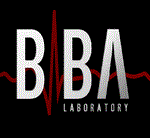Biological Systems Engineering, Department of

Biomedical Imaging and Biosignal Analysis Laboratory
Date of this Version
4-2007
Document Type
Article
Citation
IEEE Transactions on Ultrasonics, Ferroelectrics, and Frequency Control, Vol. 54, No. 4, April 2007, pp. 757 - 767.
Abstract
Feature tracking is an algorithm for estimating tissue motion and blood flow using pulse-echo ultrasound. It was proposed as a computationally simpler alternative to other techniques such as autocorrelation and time-domain cross correlation. The advantage of feature tracking is that it selectively extracts easily identifiable parts of the speckle signal (e.g., the local maxima), reducing the amount of information being processed. Studies on feature tracking to date have used stationary, specklegenerating targets to simulate blood flow. Also, feature tracking has not been compared with accepted commercial methods. This study directly compares feature tracking performance with the complex autocorrelation method, which is the most common color flow algorithm. Experiments were performed with both a rotating string phantom and a commercial flow phantom surrounded by tissuemimicking material, using 2.25MHz and 3.5MHz transducers, under more realistic signal-to-clutter (-15 to -35 dB) and signal-to-noise ratios (SNR) (15 dB to 3 dB) than previous translating-phantom tests. The feature tracking approach is shown to produce mean estimates comparable to autocorrelation (R2 = 0.9954 and 0.9960 for 6-sample and 12-sample autocorrelation, respectively, and R2 = 0.9998 for both 6-sample and 12-sample feature tracking) for velocities ranging from 10 to 100 cm/s. The variance of featuretracking estimates is shown to compare favorably to the complex autocorrelation approach using the same number of ensemble flow samples (19 to 28% lower standard deviation for 3.5 MHz, 36 to 55% lower standard deviation for 2.25 MHz). However, linear regression of the feature locations does not produce an appreciable improvement in estimation variance. Discussion of the need for further research, particularly in the areas of feature detection and feature correspondence, is given.
Included in
Biochemistry, Biophysics, and Structural Biology Commons, Bioinformatics Commons, Health Information Technology Commons, Other Analytical, Diagnostic and Therapeutic Techniques and Equipment Commons, Systems and Integrative Physiology Commons


Comments
Copyright 2007 IEEE. Used by permission.